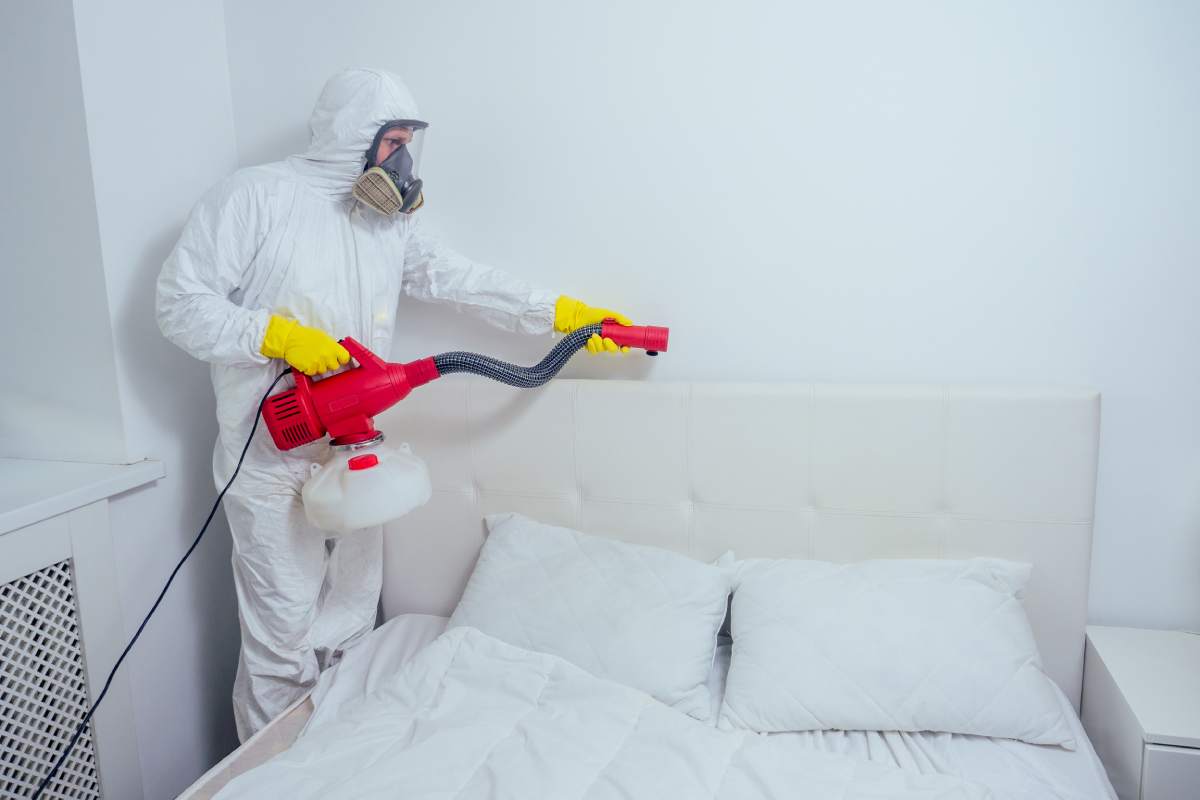How Do I Know I Have Bedbugs? How to Treat Bedbugs? DIY vs. Professional Solutions
Bedbugs are unwelcome pests that can disrupt the comfort of your home and lead to itchy bites and sleepless nights. Identifying and treating a bedbug infestation promptly is essential to prevent it from worsening.
If you’re concerned about bedbugs, here’s what you need to know about identifying them, available treatments, and the advantages and disadvantages of DIY versus professional approaches.
- What Attracts Mice and Rats? Can I Get Rid of Rats Myself?
- Reasons to Remodel or Renovate Your Kitchen
- What are the different types of flooring?
Recognizing a Bedbug Infestation: Signs and Symptoms
Bedbugs are small, flat, reddish-brown insects that feed on human blood, typically at night. Although they’re notoriously elusive, several signs can alert you to their presence:
1. Bites on the Skin
- Appearance: Bedbug bites usually appear as small, red, and itchy bumps. They are often clustered in a line or zigzag pattern, as bedbugs tend to bite multiple times while feeding.
- Location: Bites often appear on exposed areas of the body, such as the arms, legs, neck, and face.
- Reaction: Some people experience severe itching, swelling, or even an allergic reaction, while others might have no reaction at all.
2. Bloodstains on Sheets and Bedding
- You might notice small reddish-brown stains on your bedding, which are typically blood spots from bedbugs being crushed during the night or from their feeding activities.
3. Bedbug Faecal Marks
- Bedbugs leave dark, tiny faecal spots that resemble ink dots on sheets, mattresses, walls, or furniture. These stains are a telltale sign of bedbug activity and are often found near seams or edges where bedbugs hide.
4. Shed Exoskeletons
- As bedbugs grow, they shed their outer exoskeleton, leaving behind clear or brownish skins. Finding these skins on bedding or around furniture indicates an infestation.
5. Live Bedbugs
- Seeing a live bedbug is often the clearest sign of an infestation. They are small, about the size of an apple seed, and hide in dark crevices close to where humans sleep or rest.

How to Treat Bedbugs
Bedbugs are resilient and can quickly spread throughout your home if not treated effectively. There are various approaches for getting rid of them, ranging from do-it-yourself (DIY) treatments to hiring a professional. Let’s look at the pros and cons of each.
DIY Bedbug Treatment Methods
Treating bedbugs yourself can be effective, especially if the infestation is detected early and limited to a small area. Here are some common DIY approaches:
1. Heat Treatment
- How it works: Bedbugs cannot withstand high temperatures. Washing infested bedding, clothing, and fabric items at 60°C or higher, followed by drying on the highest setting, can kill bedbugs and their eggs.
- Limitations: Heat treatment works best on fabric items. Bedbugs hiding in furniture or wall crevices won’t be eliminated with this approach alone.
2. Vacuuming
- How it works: Use a vacuum cleaner to remove bedbugs and their eggs from mattresses, carpets, and furniture. Make sure to seal and discard the vacuum bag in a sealed plastic bag to prevent bedbugs from escaping.
- Limitations: Vacuuming doesn’t kill bedbugs or their eggs; it only removes them. It must be done frequently and thoroughly for it to be effective.
3. Diatomaceous Earth
- How it works: Diatomaceous earth (DE) is a natural, powder-like substance that dehydrates and kills bedbugs when they come into contact with it. Sprinkle it around beds, along baseboards, and in cracks where bedbugs may hide.
- Limitations: DE requires direct contact with the bedbugs, which can make it difficult to ensure complete eradication. It can take several days or even weeks to see results.
4. Bedbug Sprays and Chemical Treatments
- How it works: There are over-the-counter sprays and insecticides designed specifically for bedbug control. These are usually sprayed directly onto infested areas, such as mattress seams and crevices.
- Limitations: Many sprays contain chemicals that can be harmful if used improperly. Additionally, some bedbugs are resistant to common insecticides, making them ineffective.
Professional Bedbug Treatment Methods
Professional pest control services are often the most reliable way to eradicate a bedbug infestation, especially for large or persistent infestations. Here are some techniques used by professionals:
1. Heat Treatments
- How it works: Professionals use specialized equipment to heat an entire room to a temperature lethal to bedbugs (around 50-60°C). This treatment is highly effective as it reaches all areas, including furniture, walls, and floors.
- Advantages: Heat treatments are chemical-free and can eliminate both bedbugs and their eggs in one session. This approach is safe for most household items and furnishings.
- Limitations: Heat treatments can be expensive and require that you vacate the home for several hours.
2. Chemical Treatments
- How it works: Pest control experts use powerful, regulated insecticides that are more effective than over-the-counter options. These are applied strategically in bedbug-prone areas.
- Advantages: Professionals have access to high-quality insecticides and know where to apply them for maximum effect.
- Limitations: Chemical treatments may require multiple visits, and some people may have concerns about the use of chemicals in their home.
3. Steam Treatments
- How it works: Steam treatments involve the application of high-temperature steam to areas infested with bedbugs. Steam penetrates deep into mattresses, fabrics, and cracks.
- Advantages: Steam treatment is chemical-free and effective on bedbugs and eggs. It can be combined with other treatments for greater effectiveness.
- Limitations: Steam treatments are generally more suitable for smaller infestations or as a supplemental treatment.
DIY vs. Professional: Which Is Right for You?
Choosing between DIY and professional treatment depends on several factors, including the severity of the infestation, budget, and your comfort level with handling the process.
DIY Treatment: Pros and Cons
- Pros:
- Cost-effective, especially for minor infestations.
- Gives you control over the process, with no need for outside help.
- Suitable for isolated infestations in small spaces.
- Cons:
- Requires time and effort for consistent results.
- Some treatments can be hazardous if not applied properly.
- DIY treatments are often less effective for large, widespread infestations.
Professional Treatment: Pros and Cons
- Pros:
- Pest control experts have experience and access to effective treatments.
- Ideal for severe or widespread infestations that DIY methods can’t control.
- Professionals can often eliminate bedbugs faster and more efficiently.
- Cons:
- Higher upfront cost, which can be a drawback for budget-conscious individuals.
- Some professional methods require temporary relocation during treatment.
Final Thoughts on Bedbug Control
Bedbugs are tenacious pests, and a small infestation can quickly become a significant problem if not addressed. While DIY methods can work for small infestations, professional treatment is often more efficient and reliable for larger or recurring infestations.
A combination of vigilance, preventive measures, and quick action will help you keep your home bedbug-free.




